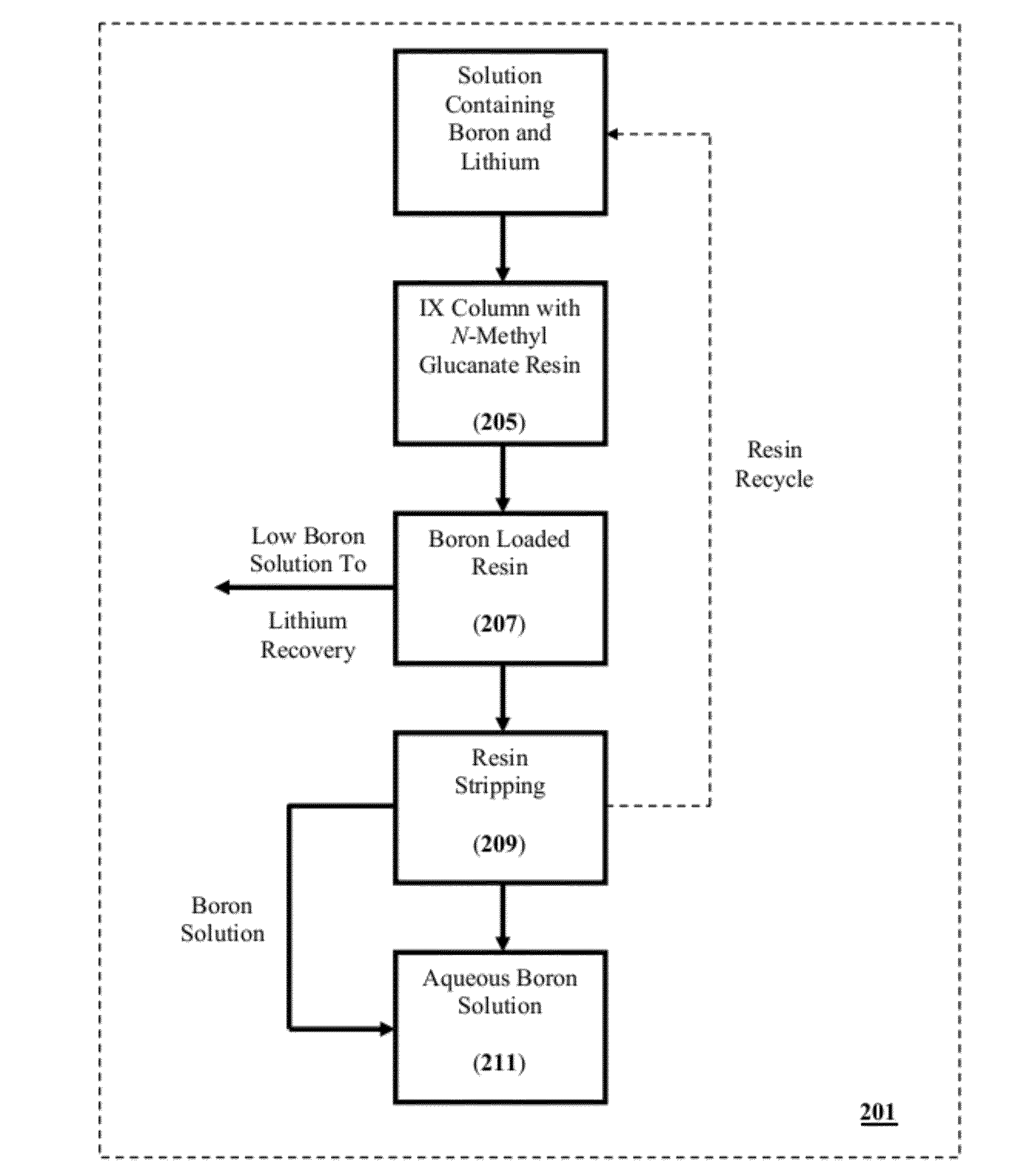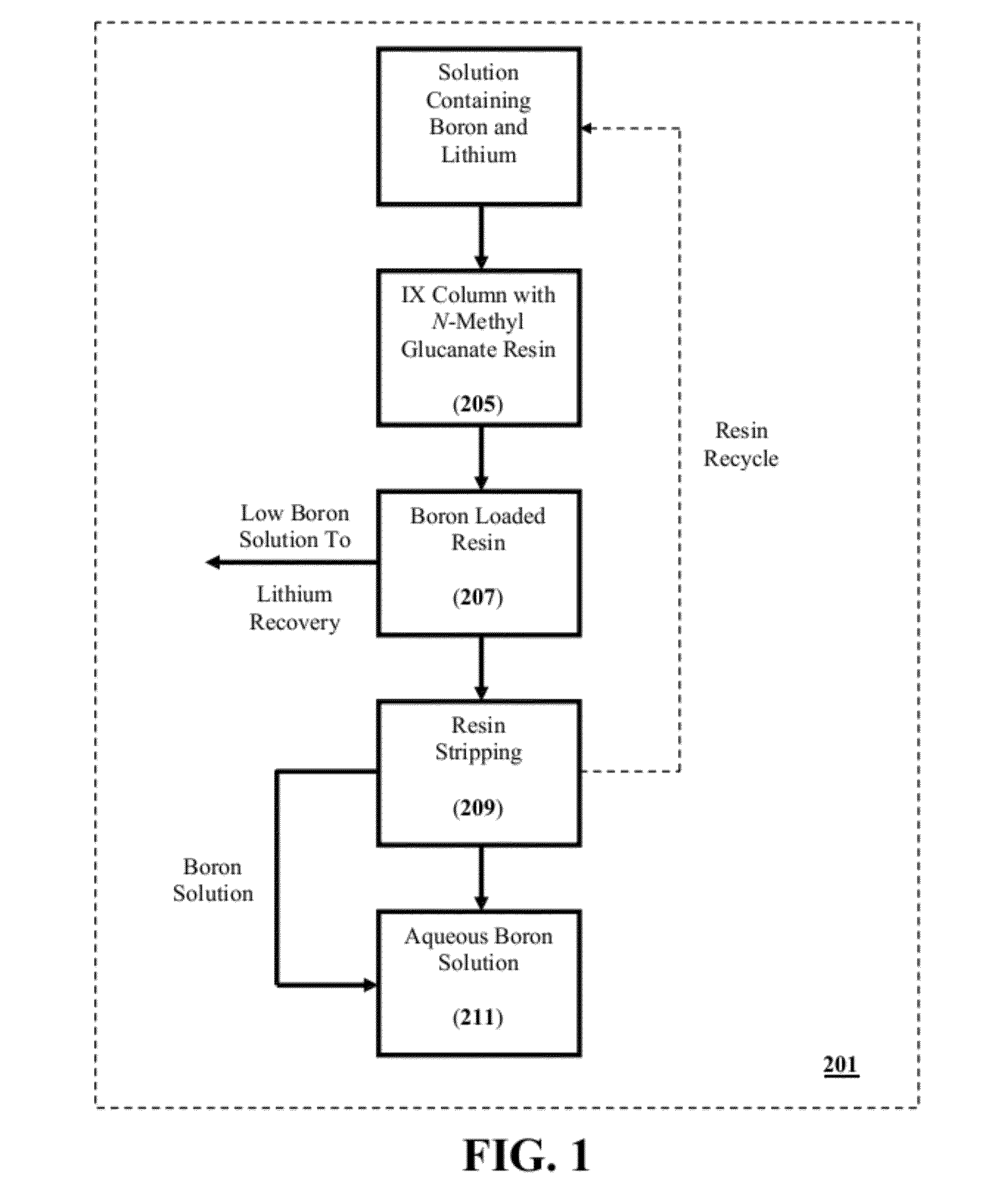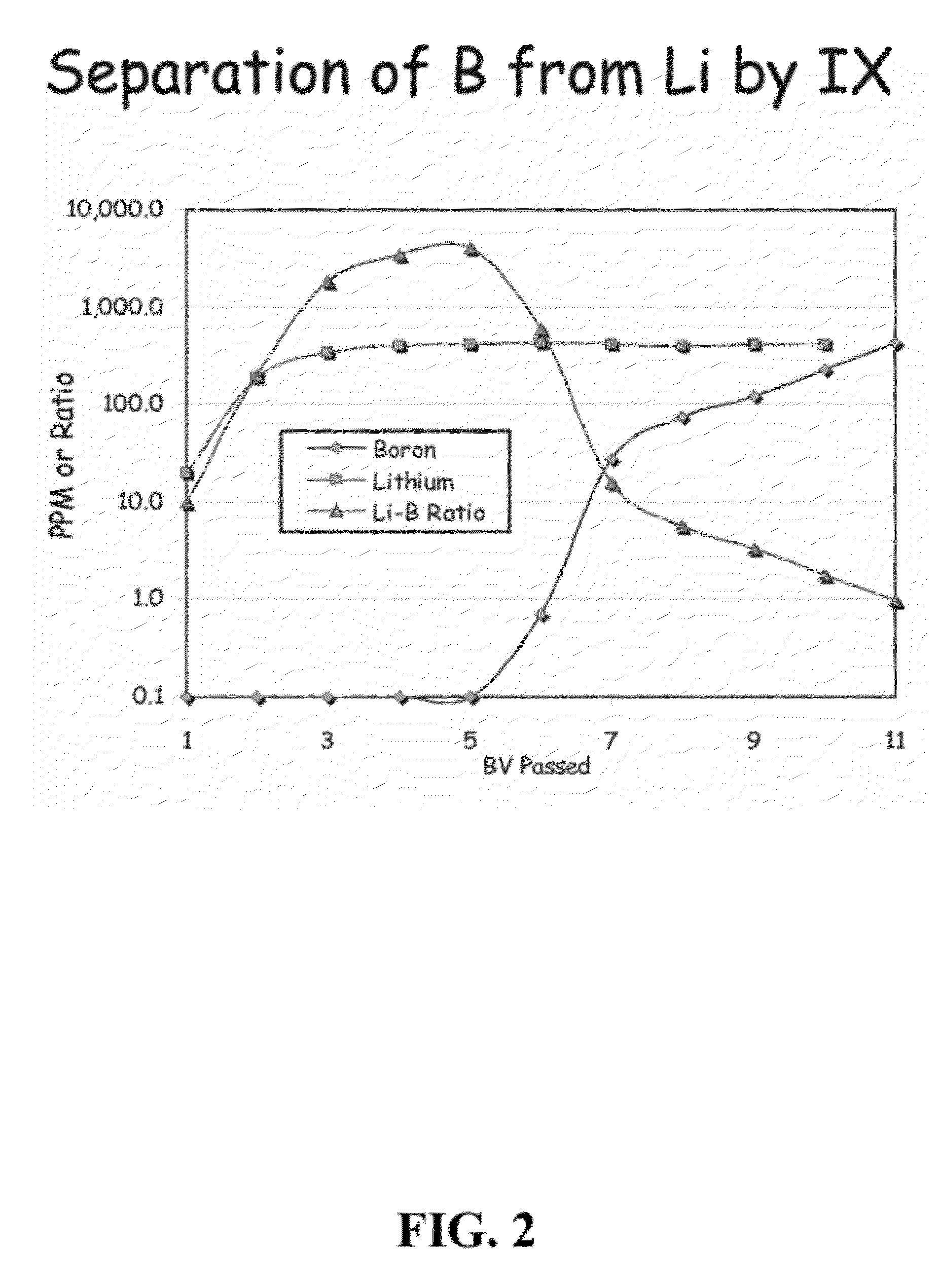System and Method For Recovering Boron Values From Plant Tailings
a technology of plant tailings and recovery methods, applied in the field of boron recovery, can solve the problems of raising environmental problems, lithium minerals represent a significant devaluation in the value of deposits, and conventional mining practices create a significant amount of waste materials
- Summary
- Abstract
- Description
- Claims
- Application Information
AI Technical Summary
Problems solved by technology
Method used
Image
Examples
Embodiment Construction
[0021]While the approach described in U.S. Pat. No. 5,236,491 (Duyvesteyn) represents a notable advancement in the art, as noted above, this approach requires the use of concentrated acids and bases to respectively strip the anionic resin and to reactivate it. Consequently, in practice, this approach is somewhat cumbersome and economically unfriendly. There is thus a need in the art for an improved process for separating boron and lithium minerals which does not suffer from these infirmities.
[0022]It has now been found that the foregoing need may be addressed through some of the systems and methodologies disclosed herein. In these systems and methodologies, an anionic resin is used to separate boron and lithium in a manner similar to that described in U.S. Pat. No. 5,236,491 (Duyvesteyn). However, rather than using concentrated acidic solutions to strip the boron from the resin, the boron content is instead removed from the resin with a precursor solution which reacts with the boron...
PUM
 Login to View More
Login to View More Abstract
Description
Claims
Application Information
 Login to View More
Login to View More - R&D
- Intellectual Property
- Life Sciences
- Materials
- Tech Scout
- Unparalleled Data Quality
- Higher Quality Content
- 60% Fewer Hallucinations
Browse by: Latest US Patents, China's latest patents, Technical Efficacy Thesaurus, Application Domain, Technology Topic, Popular Technical Reports.
© 2025 PatSnap. All rights reserved.Legal|Privacy policy|Modern Slavery Act Transparency Statement|Sitemap|About US| Contact US: help@patsnap.com



